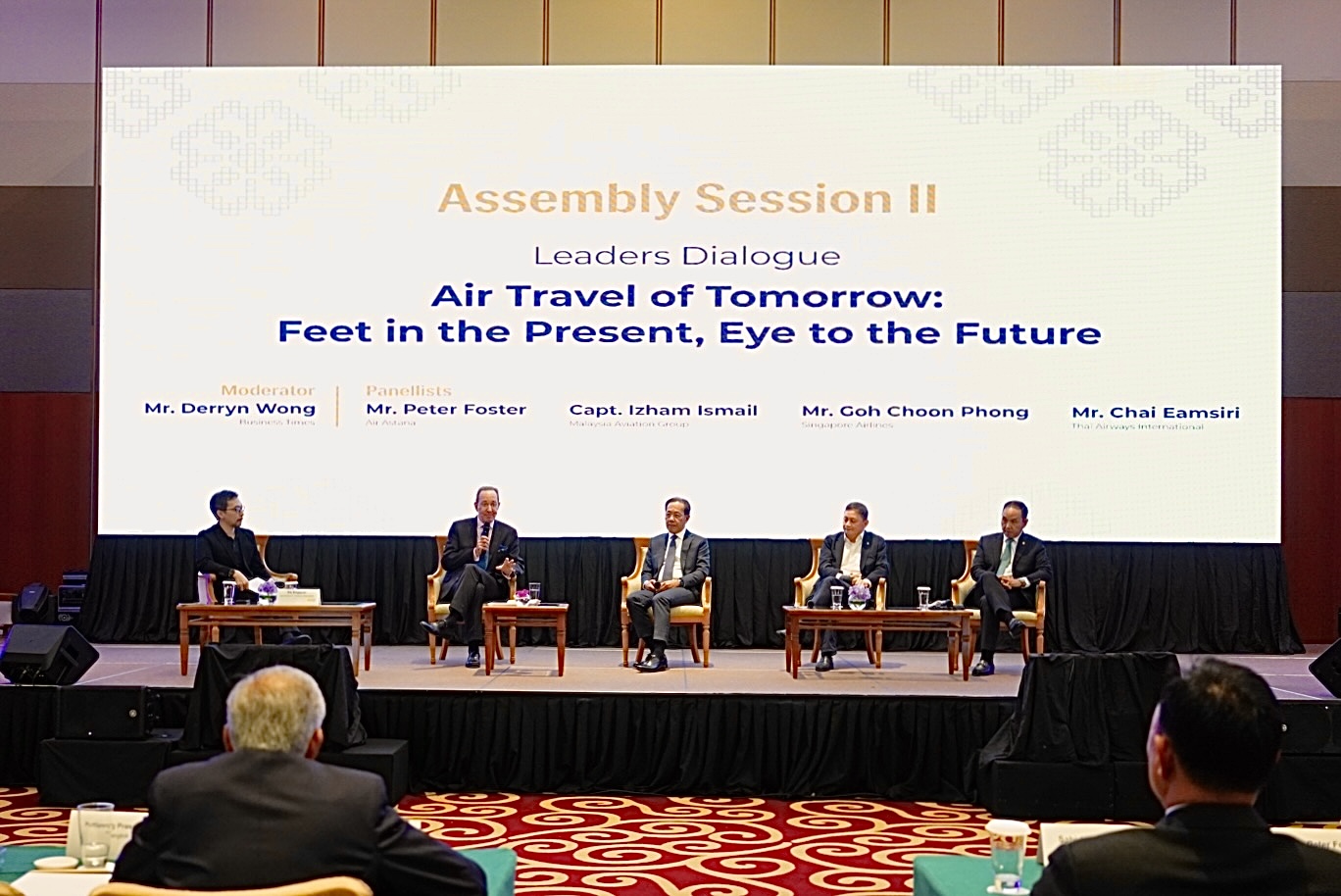Sustainability measures have emerged as a key focus for airline leaders who gathered in Brunei this week to discuss the future of aviation.
Leaders of the Association of Asia Pacific Airlines (AAPA), gathered for the 68th Assembly of Presidents in Brunei Darussalam this week which was themed “Jetting into 2050: Future Proofing Asian Aviation”.
Airline leaders were optimistic, as regional air travel and cargo growth continues to surpass the global industry’s growth, while load factors remain steadfastly strong.
“The outlook for the region’s airlines is broadly positive, given the sustained demand for air travel and strong rebound in trade activity. It is a remarkable recovery on key metrics, considering that air transport ground to an almost complete standstill for two years during the COVID-19 pandemic in 2020,” AAPA director general Subhas Menon said.

AAPA assembly of presidents 2024. (Supplied)
Airlines are firmly committed to reducing their carbon footprint and airline leaders are only too aware of the risks to aviation safety from climate change.
With Sustainable Aviation Fuel (SAF) in short supply, AAPA believes that a multi-prong strategy in line with the ICAO net zero emissions reduction roadmap, is critical to meeting the industry’s net zero emissions target.
The Assembly passed a resolution calling on Governments, suppliers, air navigation service providers and airlines to deploy all aspects of the ICAO roadmap, namely SAF, breakthrough technology, CORSIA offsets and operational efficiency, in pursuing the net zero emissions by 2050 goal.
In particular, SAF produced by co-processing sustainable feedstock together with crude fossil fuel in conventional aviation fuel refineries, is a cost-effective way to stimulate SAF supply. Airlines and fuel suppliers could give impetus to the transition to SAF with co-processed SAF being made available at airports immediately.
“Every new generation of aircraft and engine delivers 15-20 per cent more fuel efficiency. The acceleration of plans for carbon-friendly aircraft and propulsion systems is an effective pathway to the common goal of net zero carbon emissions by 2050, starting with short-haul aircraft that currently account for some 28 per cent of industry emissions,” Menon said.
“With delays in the delivery of new generation aircraft, airlines are extending the use of older equipment. A strategy that prioritises technology alongside SAF, is a surer route to carbon neutrality, than one over-reliant on SAF.”
Unsurprisingly, safety remains the number one priority of all airlines.
The Assembly adopted a resolution calling for civil aviation authorities, aviation safety agencies and airlines to work closely together to share best practices through data analysis, to mitigate risks such as the loss of control in-flight.
The resolution also calls on all stakeholders to support the adoption of safety measures that address the most critical risk categories identified in the Asia Pacific region.
“The Assembly welcomed the results and recommendations of the safety culture survey conducted by the Flight Safety Foundation, as aviation safety is about promoting a proactive safety culture, leveraging data and sharing best practices to improve performance,” Menon continued.

